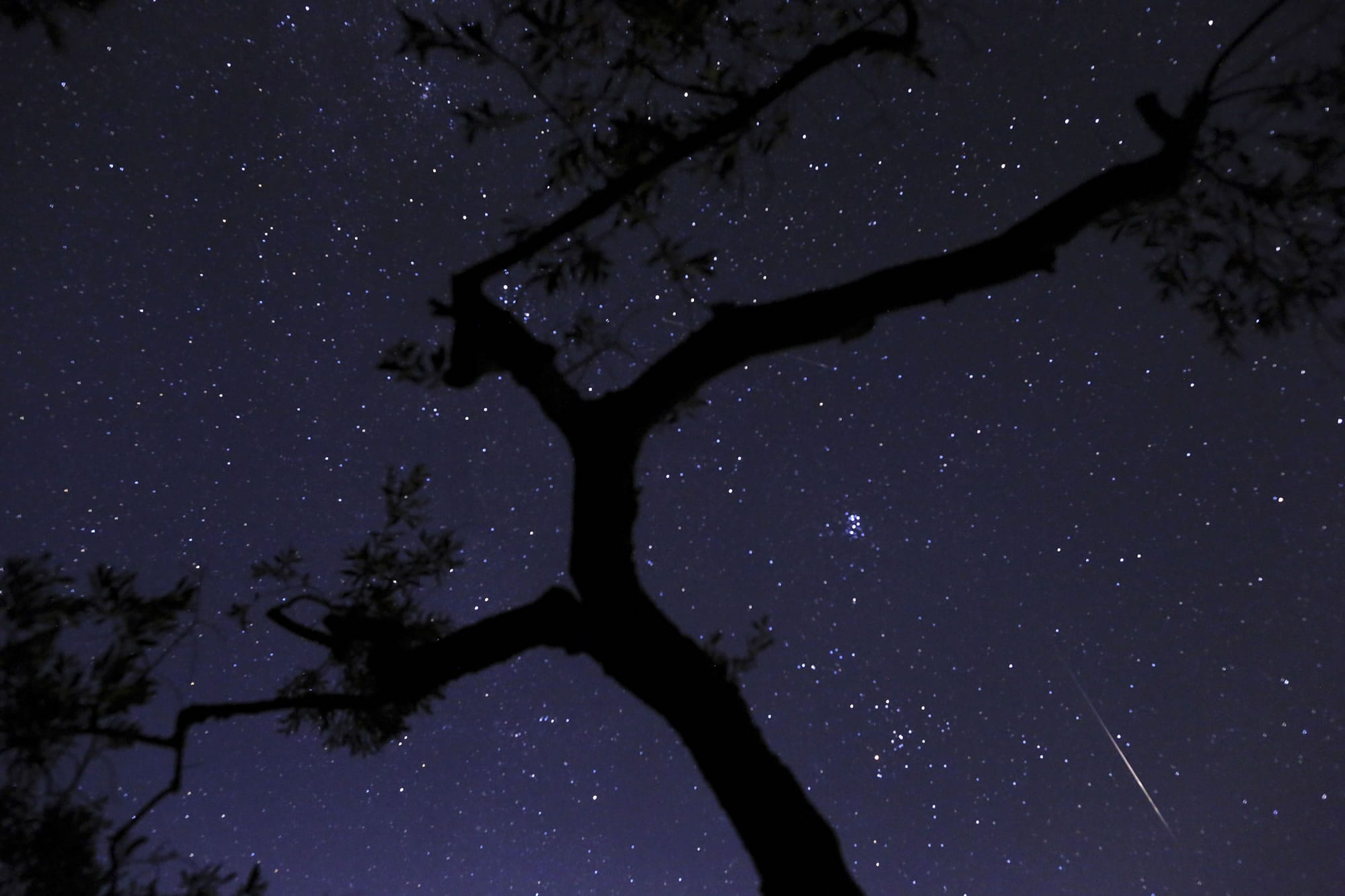As skywatchers marvel at the beauty of the annual Perseid meteor shower — set to peak late Sunday and early Monday — astronomers will be thanking their shooting stars for another reason. Airborne pollution from vaporized meteors is proving crucial for the next generation of super-sharp snapshots of exotic moons and distant galaxies.
Pollution of any kind is usually bad news for telescopes, which thrive on clear skies. But shooting stars — flaming bits of debris from comets — leave behind traces of an element astronomers are harnessing to sharpen the focus of their telescopes.
That element is sodium. Traces of it waft in a band encircling the Earth about 55 miles above ground. American astronomer Vesto Slipher, of Arizona, discovered this sodium layer in 1929, but only recently have astronomers found a use for it — by zapping it with lasers.
“We can excite the sodium (with a laser) and make an artificial star,” said Chad Trujillo of the Gemini Observatory, a multinational consortium that operates telescopes in Hawaii and Chile.



